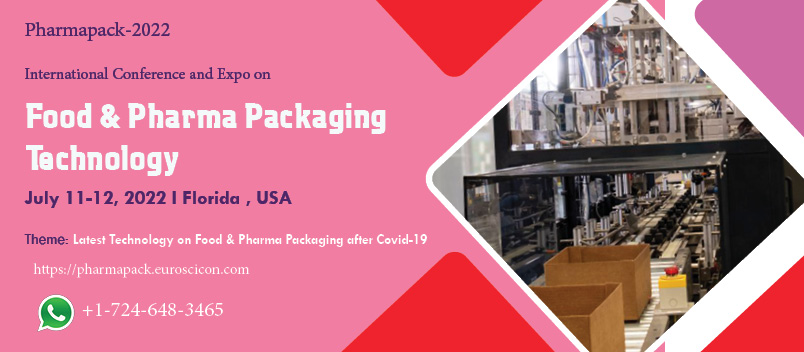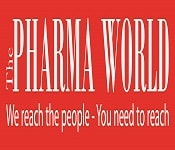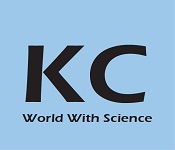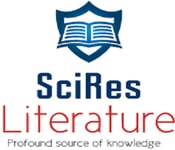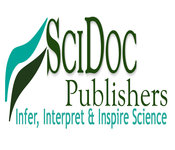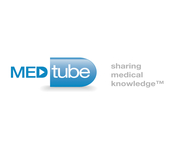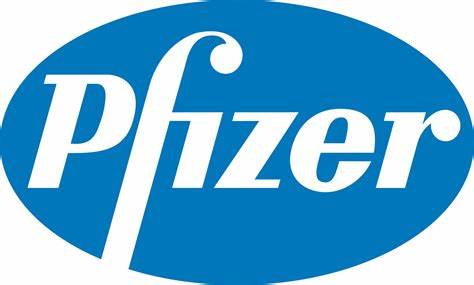Pharmapack-2022
ABOUT CONFERENCE
Pharmapack-2022 is a part of medication which manages the Health (physical, mental and social) and clinical consideration, and administrations including avoidance, analysis and treatment of intense and interminable illnesses.
We gladly declare International Conference and Expo on Food & Pharma Packaging Technology to be held during July 11-12, 2022 .an online occasion working under the Theme: Latest Technology on Food & Pharma Packaging after Covid-19.
With individuals from around the globe concentrated on finding out about PharmaPack its advances in improving a health; we give you a one of a kind chance to arrive at the biggest gathering of members from the packaging companies’ people group. Lead introductions, disseminate data, meet with present and potential researchers, make a sprinkle with new medication improvements, new treatment strategies and get name acknowledgment at this 2-day occasion. Incredibly famous speakers, the latest procedures, advancements, and the most up to date refreshes are signs of this meeting.
A conference is a multidisciplinary program with expansive cooperation with individuals from around the world concentrated on finding out about PharmaPack Research and its advances. This is your best chance to achieve the biggest gathering of members in our Pharmapack-2022 conference from the scholarly world, inquire about substances, medicinal gatherings, related affiliations, social orders.
Pharmapack-2022 meeting likewise invites the support of Directors, Presidents, CEOs, delegates and mechanical administrators from Pharmaceutical and Healthcare areas making it a stage for worldwide systems administration advancing business connections, trading thoughts, energizes the up and coming investigates and analysts under the unique classification "Young Research Forum". We are giving best banner honors, best understudy speaker grant under youthful research gathering.
Why to attend?
Pharmapack-2022 may be a specialty of the medication that takes care about infants’ improvement, development, diseases and infections. Individuals need to be roused on checking out about PharmaPack and its advances in controlling the spread of infectious diseases in infants and advance sound way of healthy life. This gathering gives the best chance to rouse and impact the biggest collection of contributors from the PharmaPack people group. It endeavors to offer tons of chances to networking, to satisfy and connect with the most researchers, Professors specialists, patrons and exhibitors.
The two days congress contains a grouping of best in class meetings, conferences, uncommon keynote meetings, roundtable talks, board conversations, and banner introductions, youthful specialist gatherings, E-banners drove by the most exceptional and esteemed speakers who outperform in the field of PharmaPack-2022.
We attempt and unite an honest sort of people to look at one among the unique researches, yet additionally mention how this examination functions are often valuable to real clinical practice in PharmaPack 2022 gives chance to talk over other related issues that influence packaging technology, such as public policy and advocacy. This congress gives an excellent chance to praise the past, present and fate of the PharmaPack discipline during this millennium.
Key Take ways:
CPD Accreditation Credits
Professional Worldview
Global Recognition of Scholars
Emerging and Cutting-Edge Technologies
Publication of Abstracts in Conference Proceedings
Deep Learning and sharing knowledge
Exposure to the Upcoming Business Trends
Supporting Communications between Scholars
Assessing the Research and Communication of Research Discoveries
Participation Certificate with International Signatories
Discover, Deliver and Delight
SESSIONS & TRACKS
Track 1: Current Trend’s in Food and Pharma Packaging
Pharmaceutical finished products are packaged in compliant and safe packaging material to make sure the product reaches its intended end-user, i.e., patient, without affecting external conditions such as Environmental and transportation. The pharmaceutical packaging equipment protects the product from damage and containment. It is also used to protect the product's basic identification information, such as the manufacturing date and Expiration date.
Regulatory bodies such as the FDA and the WHO have their standards for the packaging industry. Any manufacturer accredited to these bodies must adhere to these regulatory body packaging requirements.
Some important areas where packaging plays an important role include the following
Track 2: Preventing Counterfeiting and Tampering in Packaging
The worldwide pharmaceutical industry is facing challenges of counterfeit and tampered drugs. These drugs not only compromise the manufacturer’s credibility and reputation, but the danger it poses to the patient is inevitable. The pharmaceutical packaging industry is devising and innovating new ways to prevent the problem of counterfeit and tempering. Some advancement in packaging towards anti-tampering and anti-counterfeit includes
Tamper – Proof seals - Tamper-proof seals ensure drug reliability by using a seal to indicate box opening. The seals are destroyed when removed from the drug and cannot be applied manually. It requires specialized equipment to apply the seal. This makes it easier for the user to know and identify if someone has opened the pack or box. Some drug manufacturers also use Holograms to prevent tampering with their medicines.
QR Code - QR code allows the codification of the critical product information such as Manufacturing and Expiry date. The information can only be decoded with the scanner to read the product information. This codification allows the user to verify the product’s authenticity. It is not easy to generate QR codes. Instead, it requires specialized equipment to generate and print the QR code.
Radio Frequency Identification (RFID) - RFID marks or tags are not visible to the naked
eye. Instead, they require specialized equipment to read the RFID markings. RFID can effectively prevent counterfeiting as RFID tags cannot be copied easily without specialized equipment
Track 3: Packaging Machines in the Pharmaceutical Industry
There are different types of packaging machines used in the pharmaceutical industry. Implementation of each type depends upon the pharmaceutical product being packaged. The type selection also depends on the regulatory body requirements.
Let’s look at some common packaging machines in Pharmaceutical Industry
3.1: Blister Packing Machines
Blister Packing Machines pack the pharmaceutical product in between two packaging materials. After the product is placed between the two packaging materials, they are sealed together. The sealing helps to protect the product from different hazardous factors such as extreme environmental Conditions and Containment. The sealing action occurs at a high temperature, safe for both product and material. The blister’s sealing must be leak-proof and should not allow the passage of any particle through it.
Blister packing machine forms a blister or cavity in packaging material at machine’s Forming Station, followed by product insertion in the blister. After the product is carefully and precisely inserted into the blister, it is wrapped with other packaging material and is sealed at the machine’s Sealing Station. After sealing, the blister packs are cut according to their standard sizes at the machine’s Cutting Station. The formed blister drops at conveyors then transfer the final blister for collection in a container or bin. In some cases, the final blisters are directly transferred to the carton for packing.
The packaging material in which a cavity is formed is called Forming Foil, and the packaging material used to seal the forming material is called Lidding Foil.
Commonly, there are two combinations of packaging material used in Blister Packaging Machine – Aluminum with Aluminum, often called ALU- ALU, and Aluminum with PVC, often called ALU - PVC.
In ALU – ALU formation, both the forming and lidding foils are made up of Aluminum. The cavity is formed by vacuuming Aluminum foil through the die of tablet size and shape. After filling the cavity with the product, another Aluminum foil is sealed to cover the blister.
In ALU – PVC formation, the forming foil is Aluminum, while the product containing material is PVC. PVC is first heated to soften it, and then vacuum sucked through the die of tablet size and shape to give the PVC the desired shape. After the product fills the cavity, Aluminum foil is used to seal the blister.
To make sure that there are no leaks in the blisters. The blisters are subject to a leak test, which checks the blister’s sealing integrity. To perform a leak test, samples of blisters are collected from a production batch. The sample blisters are placed inside a
Vacuum chamber containing colored liquid, and a vacuum is applied. After vacuum time completes, blisters are taken from the chamber and are examined. If traces of color are found inside the blister, indicating poor sealing, and fails the test. The production department immediately stops the machine, and the operator must fix the problem. If no traces of color are found inside a blister, the test is marked pass.
3.2: Liquid and Dry Powder
In liquid filling machines, pumps are used to fill the bottles. For volume control, pumps can be manually adjusted or automatic, such as servo-driven. The dry powder filling Machine uses the auger assembly or vacuum function to control the filling volume and execute the filling operations.
Bottle Filling Machines pack different forms of pharmaceutical products in glass bottles. The glass bottle's chemical composition is specially manufactured for pharmaceutical products and is categorized into Type I, II, and III bottles. Their classification is based on the type of chemical used in glass manufacturing. The Machine fills the bottle with the required volume, which can be changed depending on the different product requirements.
Bottle Filling Machines can fill bottles of any volume size, but commonly their minimum volume is 30 ml and can go up to the maximum level of 1000ml. The fill volume is controlled to avoid under or excessive filling. Before filling the bottle with the product, the bottles are cleaned to remove dirt particles or other contaminants. This is commonly done with the bottle blowing Machine, which uses clean compressed air to blow the bottle inside and remove any foreign particles.
3.3: Bottle Filling Machines
Bottles Filling Machines fill two types of pharmaceutical products – Liquid and Dry powder.
Types of Bottle Filling Machine
Operation wise, there are two types of Bottle Filling machines used in the industry – Semi-Automatic and Automatic.
In semi-automatic, the operation is partially automatic and requires human assistance to complete the filling process. The bottles are placed manually in the filling station, and the operator initiates a signal to start filling. The bottle's fill volume is set according to the product requirement, and filling automatically stops when the product's required quantity is filled into the bottle. After filling, the bottles are manually removed from the filling machine. The bottles are also manually air blown to remove any foreign particles.
In automatic type, the operation from bottle placement to filling, and finally to bottle removal occurs automatically. The bottles are fed through a conveyor on the filling station, which places the bottles below the filling nozzle. The filling mechanism is such that it automatically detects the bottle's presence and starts the process. If it does not
Detect the bottle, the filling is not started. After the required liquid volume is filled into the bottle, the filled bottles are transported to the next stage. The bottle-blowing action is also automatic. A conveyor automatically transfers the bottles from the blowing Machine to the filing machine.
Track 4: Packaging Materials and Closures
In accordance with the methods of use and administration of medicinal products, packaging materials, closures and containers vary a great deal and have to meet a wide variety of different requirements. All the routes used for systemic access have demanding requirements, which often can only be met by complex structured and formulated medicinal products. This is particularly true of the new medicinal products that are now appearing, such as those administered via transdermal delivery systems.
To ensure the efficacy of a product during its total shelf-life, pharmaceuticals must be regarded as a combination of the medicial product itself and the packaging.
Track 5: Pharmaceutical Sciences and Research
Pharmaceutical Sciences is a dynamic and interdisciplinary field that aims to integrate fundamental principles of physical and organic chemistry, engineering, biochemistry, and biology to understand how to optimize delivery of drugs to the body and translate this integrated understanding into new and improved therapies against human disease.
Pharmaceutical Scientists give papers that describe revolutionary research spanning the complete spectrum of drug discovery, development, evaluation, and regulatory approval. Small drug molecules, biotechnology merchandise together with genes, peptides, proteins and vaccines, and genetically engineered cells are a fundamental part of papers posted here. The current emphasis of the journal consists of the following areas: pre-formulations; drug shipping and focused on; components design, engineering, and processing; pharmacokinetics, pharmacodynamics, and pharmacogenomics; molecular bio-pharmaceutics and drug disposition; and computational bio pharmaceutics, among others.
• Drug Design and Drug Discovery
• Formulation Design and Pharmaceutical Technology
• Pharmacokinetics (PK), Pharmacodynamics (PD) and Systems Pharmacology
• Translational Research and Individualized Medicine
• Pharmacy Practice Research
Track 6: Growth Strategies of Pharmaceutical Industries
A drug interaction is a situation in which a substance (usually another drug) affects the activity of a drug when both are administered together. This action can be synergistic (when the drug's effect is increased) or antagonistic (when the drug's effect is decreased) or a new effect can be produced that neither produces on its own. Typically, interactions between drugs come to mind (drug-drug interaction). However, interactions may also exist between drugs and foods (drug-food interactions), as well as drugs and medicinal plants or herbs (drug-plant interactions). People taking antidepressant drugs such as monoamine oxidase inhibitors should not take food containing tyramine as hypertensive crisis may occur (an example of a drug-food interaction). These interactions may occur out of accidental misuse or due to lack of knowledge about the active ingredients involved in the relevant substances.
Track 7: Capsule Filling Machine
Encapsulators, also called capsule fillers, capsule filling machines or encapsulation machines are mechanical devices commonly used for industrial and pharmaceutical purposes. These machines are used to fill empty soft or hard gelatin capsules of various sizes with powders, granules, semi-solids or liquids substances containing active pharmaceutical ingredients or a mixture of active drug substances and excipients. This process of filling empty capsules with substances is termed encapsulation.
Types of capsule filling machines
Various types of encapsulation machines are available and these machines are selected based on
The requirement of the manufacturer/nature of the capsule (hard capsule or soft capsule).
The quantity of capsule to be manufactured.
Encapsulators used in encapsulation of hard gelatin capsule can be classified or said to be of three types.
Manual /hand operated capsule filling machine.
Semi-Automatic capsule filling machine.
Track 8: Automatic capsule filling machine.
Encapsulators, also called capsule fillers, capsule filling machines or encapsulation machines are mechanical devices commonly used for industrial and pharmaceutical purposes. These machines are used to fill empty soft or hard gelatin capsules of various sizes with powders, granules, semi-solids or liquids substances containing active pharmaceutical ingredients or a mixture of active drug substances and excipients. This process of filling empty capsules with substances is termed encapsulation.
Operating principles of a capsule filling machine:
Capsule filling machines should all have the following operating principles in common.
1. Rectification (orientation of the bad gelatin capsules).
2. Separation of capsule caps from bodies.
3. Dosing of fill material/formulation (filling the bodies).
4. Rejoining of caps and bodies
5. Ejection of filled capsules.
Track 9: Ointment Tube Packaging
A tube, squeeze tube, or collapsible tube is a collapsible package which can be used for viscous liquids such as toothpaste, artist's paint, adhesive, caulk, & ointments. Basically, a tube is a cylindrical, hollow piece with a round or oval profile, made of plastic, paperboard, aluminum, or other metal. In general, on one end of the tube body there is a round orifice, which can be closed by different caps and closures. The orifice can be shaped in many different ways: plastic nozzles in various styles and lengths are most typical. The other end is sealed either by welding or by folding.
Typical tube sizes range from 3ml to 300ml.[1] Most tubes are designed to be dispensed with hand pressure, but some are used with a tube key at the base to help roll them up.
Track 10: Importance of Silica in Packaging
Silica gel is an amorphous and porous form of silicon dioxide (silica), consisting of an irregular tridimensional framework of alternating silicon and oxygen atoms with nanometer-scale voids and pores. The voids may contain water or some other liquids, or may be filled by gas or vacuum. In the last case, the material is properly called silica xerogel.
Silica xerogel with an average pore size of 2.4 nanometers has a strong affinity for water molecules and is widely used as a desiccant. It is hard and translucent, but considerably softer than massive silica glass or quartz; and remains hard when saturated with water.
Silica xerogel is usually commercialized as coarse granules or beads, a few millimeters in diameter. Some grains may contain small amounts of indicator substance that changes color when they have absorbed some water. Small paper envelopes containing silica xerogel pellets, usually with a "do not eat" warning, are often included in dry food packages to absorb any humidity that might cause spoilage of the food.
'Wet' silica gel, as may be freshly prepared from alkali silicate solutions, may vary in consistency from a soft transparent gel, similar to gelatin or agar, to a hard solid, namely a water-logged xerogel. It is sometimes used in laboratory processes, for example to suppress convection in liquids or prevent settling of suspended particles.
Track 11: Cosmetics Packaging
The term cosmetic packaging is used for cosmetic containers (primary packaging) and secondary packaging of fragrances and cosmetic products. Cosmetic products are substances intended for human cleansing, beautifying and promoting an enhanced appearance without altering the body's structure or functions.
Cosmetic packaging is standardized by an international norm set by the International Organization for Standardization and regulated by national or regional regulations such as those issued by the EU or the FDA. Marketers and manufacturers of cosmetic products must be compliant to these regulations to be able to market their cosmetic products in the corresponding areas of jurisdiction.
Track 12: Food Packaging and Importance of Nitrogen Gas
Food packaging is packaging for food. A package provides protection, tampering resistance, and special physical, chemical, or biological needs. It may bear a nutrition facts label and other information about food being offered for sale.
Packaging and package labeling have several objectives:
12.1: Physical protection - The food enclosed in the package may require protection from shock, vibration, compression, temperature, bacteria, etc.
12.2: Barrier protection - A barrier from oxygen, water vapor, dust, etc., is often required. Permeation is a critical factor in design. Keeping the contents clean, fresh, and safe for the intended shelf life is a primary function. Modified atmospheres or controlled atmospheres are also maintained in some food packages. Some packages contain desiccants, oxygen absorbers or ethylene absorbers to help extend shelf life.
12.3: Containment or agglomeration - Small items are typically grouped together in one package to allow efficient handling. Liquids, powders, and granular materials need containment.
12.4: Information transmission - Packages and labels communicate how to use, transport, recycle, or dispose of the package or product. Some types of information are required by governments.
Compatibility of Materials in Packaging
Packing Material Impact on Shelf life of product
Manual Packing Vs Automatic Packing Machines
Errors in Packaging?
Detection of Heavy materials during packaging
Market Analysis
Packaging of the pharmaceutical products is of key importance among drug manufacturers. According to a study on the pharmaceutical packaging market manufacturers are giving priority to clean room packaging solutions in order to control the impact of the pandemic and other ailments.
Pharmaceutical Packaging Market is expected to reach US$ 93.8 Bn in 2022, likely to surge at a vigorous 7.4% CAGR during the assessment period 2022-2031
Pharmaceutical packaging solutions include primary packaging options including bottles, vials, ampoules, blister packs, in addition to secondary packaging such as boxes, cartons, and more. Of these, the demand for bottles as a suitable type of pharmaceutical packaging is considerably high.
Key Takeaways from Pharmaceutical Packaging Market Study
- By product type, bottles are estimated to lead the market with over 30% of the value share, by the end of 2031 supported by leak-proof packaging solutions
- Plastic is projected to be the most lucrative material in the industry creating an incremental opportunity of US$ 58.41 Bn by 2031
- The U.S. holds dominance in the North America market with the presence of some of the leading pharmaceutical manufacturers
- China will showcase a solid growth driven by the expansion of local pharmaceutical sector
- Germany is projected to be dominant in Europe and is expected to continue leading as a pharma packaging manufacturing hub
